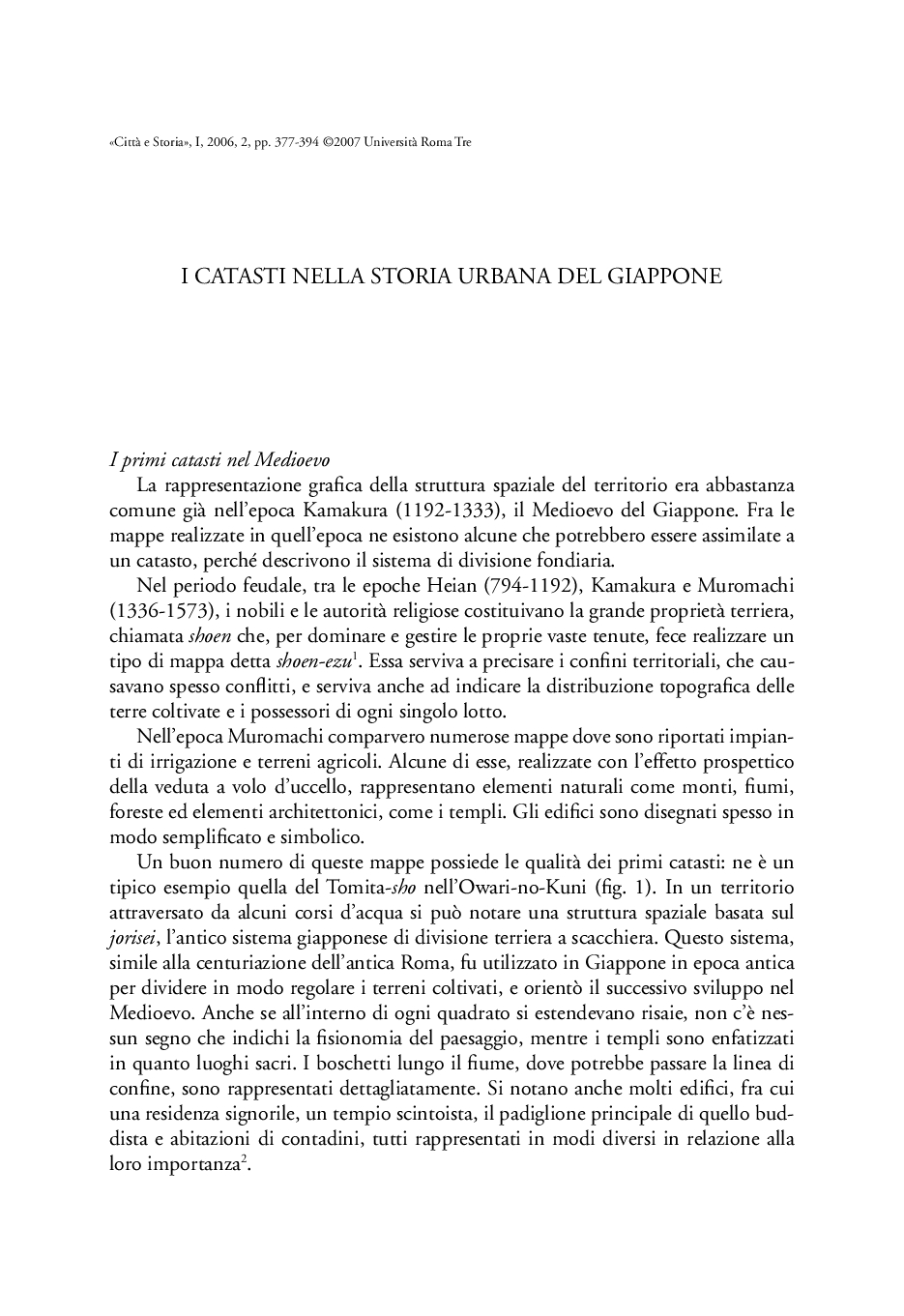Indice degli autori
CITTÀ & STORIA » 2006/2 » La città allo specchio
ISSN 1828-6364
Jinnai Hidenobu
I catasti nella storia urbana del Giappone
pp.377-394, DOI 10.17426/42257
Articoli
Abstract: Graphic representation of both city and local spatial structure was already present in medieval Japan. During the Edo period (1603-1867), maps and plans of various types were made for the diverse administrative needs of the han (feudal clan). Among these, is the dempata-ezu (dempata = agricultural land), cadastral map. These were created by the authorities in order to have access to the most important data concerning cultivated land: its typology, area and productivity. In the first half of the eighteenth century, the bakufu ordered the creation of maps called koken-ezu in order to manage and control the zone of Edo (the previous name of Tokyo). The koken-ezu contained extremely detailed information about the local society (properties, administrations, land prices, etc.) as well as about the public infrastructure (canopies, sewers, aqueducts, roads, canals, etc.). The koken-ezu demonstrates that the individual districts in the city were well managed thanks to a certain autonomy granted by the feudal regime. This cadastre of Edo was a truly indispensable document for every phase of the city’s social and administrative life.

Referenze
- download: n.d.
- Url: http://archivio.centroricercheroma.it/?contenuto=indice-degli-autori&idarticolo=724
- DOI: 10.17426/42257
- citazione: H. Jinnai, I catasti nella storia urbana del Giappone, "Città & Storia", I/2, pp.377-394, DOI: 10.17426/42257

